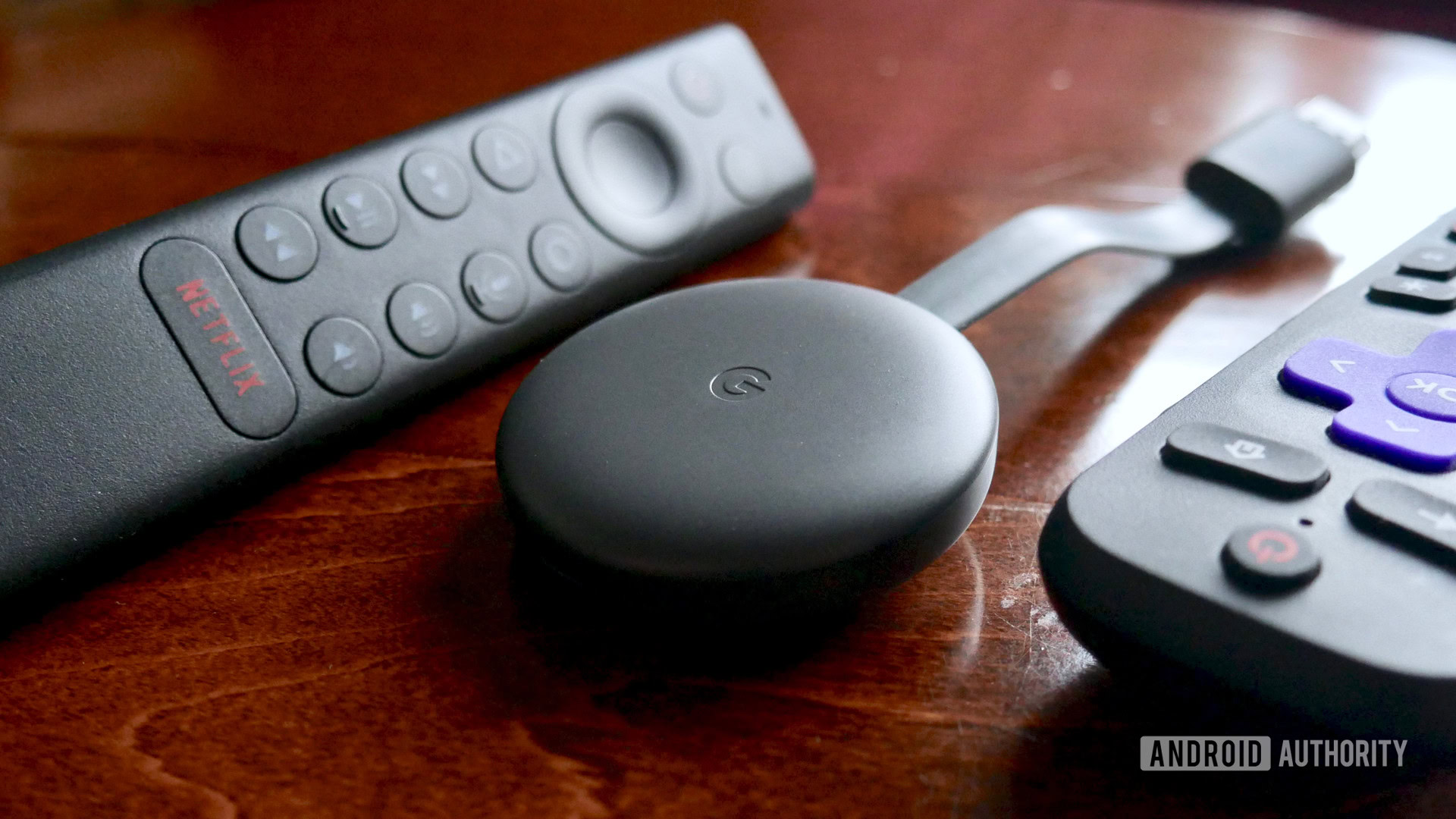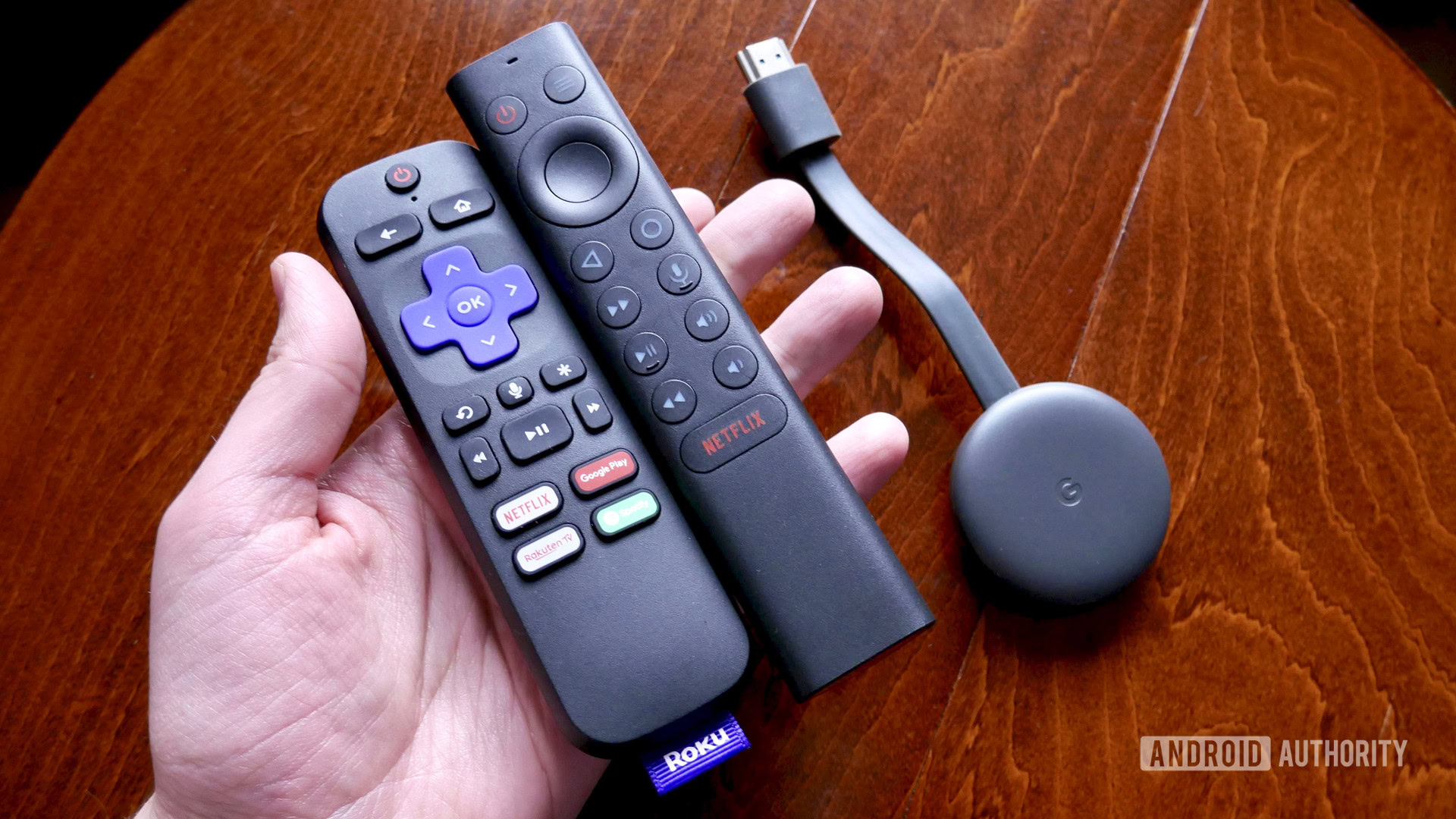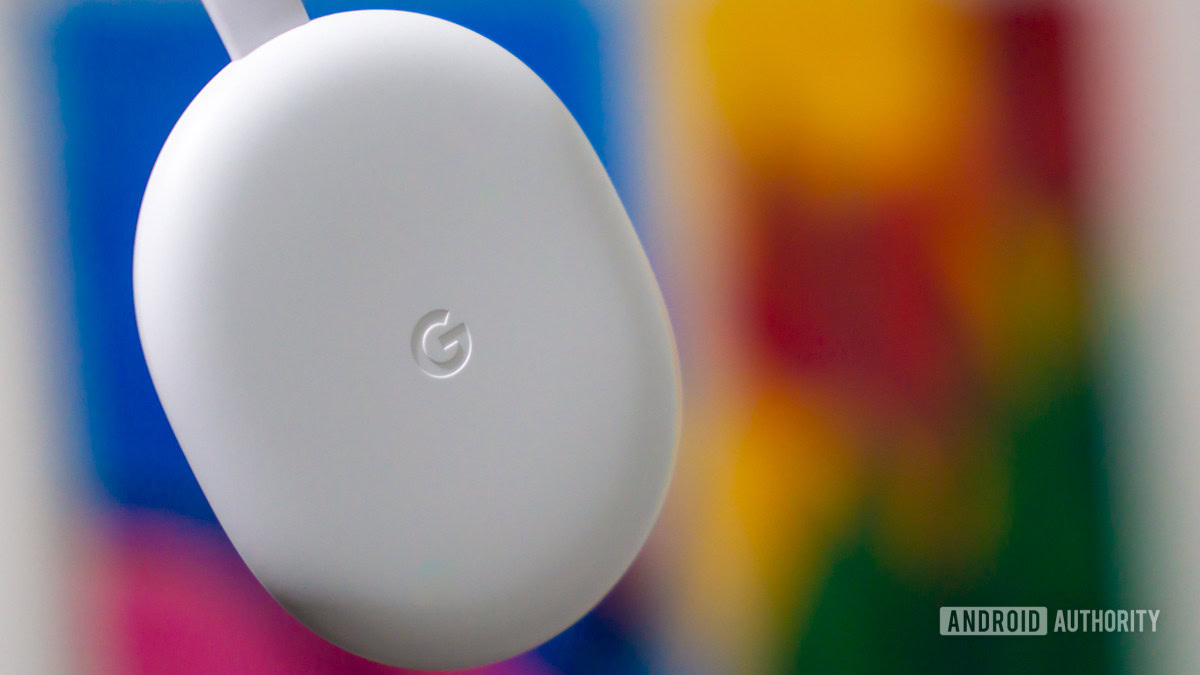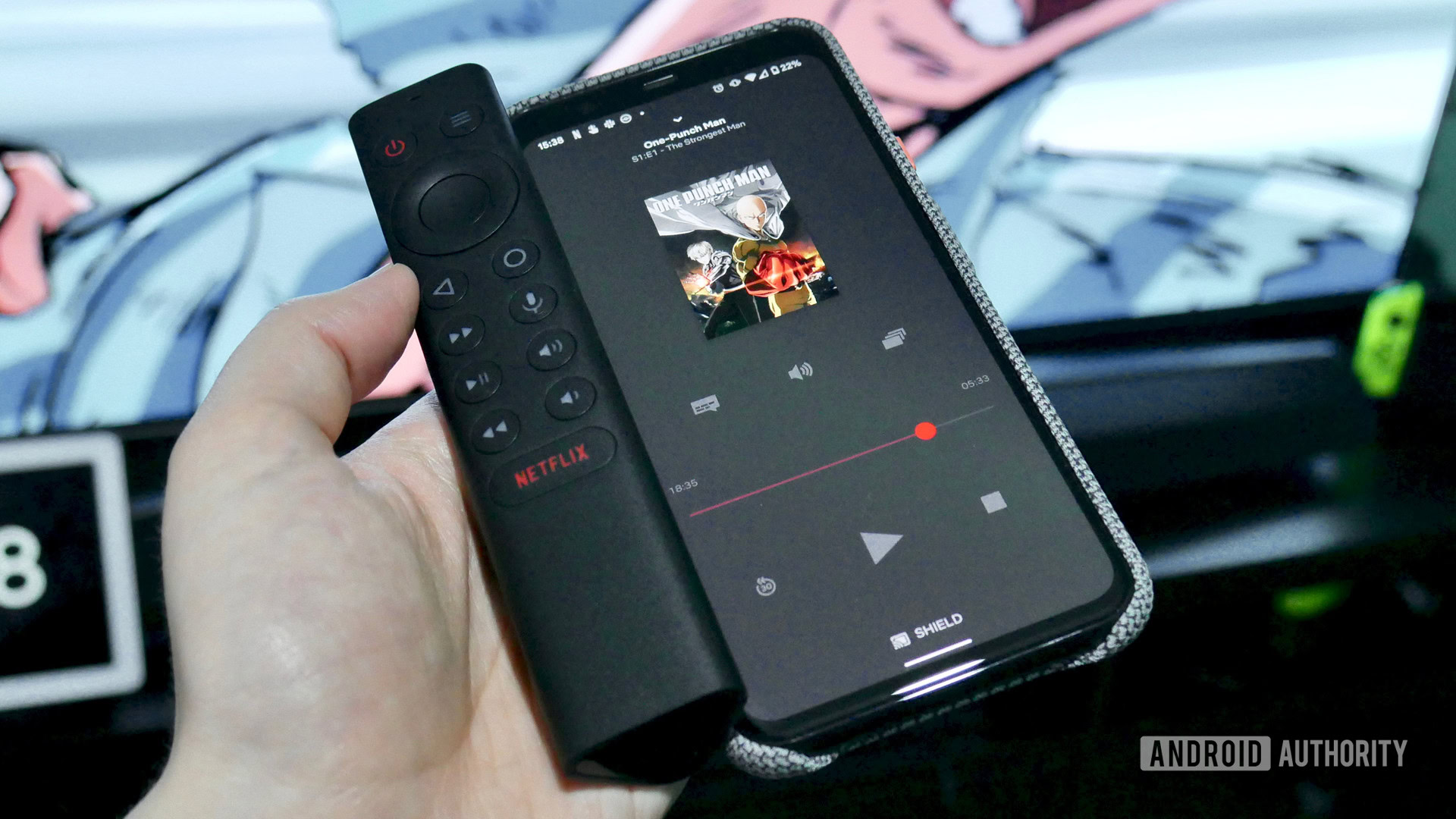Affiliate links on Android Authority may earn us a commission. Learn more.
Hey Google, why can't I buy a Chromecast with a remote?
Published onFebruary 2, 2020

Here’s an uncontroversial opinion: the Google Chromecast is pretty great.
The big G has a spotty history with media players (hello, Nexus Q), but the Chromecast has been a beacon of quality ever since it was first introduced in 2013.
See a video on your phone or PC? Hit that Cast button and boom, it’s on your TV. Throw in the affordable price tag and continually expanding support for fresh streaming platforms (most recently Amazon Prime Video and Disney Plus) and the Chromecast remains the easiest and cheapest way to turn even the dumbest TV into a user-friendly streaming machine.
Despite its simple brilliance and popularity among buyers, however, the Chromecast feels like the forgotten child whenever the search giant holds a hardware launch event. That needs to change this year, and a great place to start would be finally introducing a long-requested feature.
It’s time for Google to give us a Chromecast with a remote.
Confessions of a cord cutter
On the surface, adding a secondary bit of kit to the Chromecast package seems a little counterintuitive. Google’s entire Cast ecosystem is app- and voice-based. Why would you need a remote when you can use your phone to control your media, or just ask Google Assistant?
It’s a fair question and, honestly, the lack of a remote was something I had never really considered a problem until a few months ago.
For some context, I recently did something I should’ve done years ago: I cut the cord. After years of paying for cable TV, a forced price hike gifted to me by my provider just before Christmas (thanks for that, Virgin Media) finally gave me the kick I needed to sever those wires.
Related: Why streaming services let you share your password, for now
Several arduous calls with retentions later and gone were the hundreds of weird and wonderful channels no one ever watched. With Netflix, Prime Video, and Now TV subscriptions in the bag (and soon Disney Plus when it finally launches in the UK), I had fully pledged my undying fealty to the streaming overlords. Now all I needed was a means to actually use all those platforms on a TV.
Having quickly banished the idea of relying on a smart TV OS for anything (they’re really bad), I initially turned to my two Chromecasts as an alternative — one original model and a third-generation unit — as a stand-in for all my TV needs. It didn’t take long to realize this could only ever be a temporary fix. Waving goodbye to my dust-covered Tivo box turned out to be a breeze, but living without a remote stung much harder than I’d ever expected.
Skipping behind

I should note that Google Cast’s UI-less ecosystem is far from the ideal substitute for a traditional set-top box. Chromecast and other Cast gadgets rely on a sender device to find and stream content locally. Most mobile apps have a handy Cast button, but despite the best efforts of some of the best Chromecast apps out there, it’s all still a world away from having an official TV guide or interface you can browse through. Assistant isn’t a great help either due to limited support for some of even the most popular streaming apps.
I knew all this going in, but I was also aware that I already owned two Chromecasts. Having just cut my triple-play package to just fiber broadband (I also got rid of my home phone line because, well, I’ve got a smartphone), I was looking at a decent saving if I didn’t have to spend any extra on new streaming devices. The deal-breaker, however, was the Chromecast playback controls.
Assuming you’re using a phone and not a PC or laptop, the ideal scenario for casting content to a Chromecast is via officially-supported media apps (Netflix, Play Movies, etc.) or the Chrome browser. Not only is the process really simple, but you can also use your phone to rewind and fast forward, raise and lower the volume, switch to a different Cast device, and much more with just a few taps or swipes of the touchscreen. The downside is you have to navigate back to each app every time or keep a tab open in Chrome.

Alternatively, you can rely on the Cast slide that pops up in the notification bar, though in my experience this disappears at random and sometimes doesn’t show at all. There’s also the Google Home app, but that only lets you alter the volume or pause for some bizarre reason. Finally, there’s Assistant, though asking Google’s voice assistant to do anything too complex usually results in a “sorry, I don’t know how to do that” response.
Even if you can stomach all of the above, having to rely on your phone to do something as simple as skip back a few minutes to repeat a line in a movie can be awkward. What if your phone is on charge in another room? What if someone is using it to make a call? What if you really need to tell all your followers on Twitter that the latest episode of your favorite show is just the best ever, guys?
A phone just isn't as simple as a good old fashioned remote
A Chromecast remote wouldn’t be the most elegant solution, but it would be the simplest. It seems pretty clear at this stage that Google is hoping its voice tech will eventually mature enough to eliminate the need for anything but voice commands to interact with its various products. But until the day comes that Assistant understands when I want to watch an episode of Breaking Bad and not a clip video set to terrible music on YouTube, I’ll take pressing a few old school rubber buttons on a plastic stick, please.
Of course, something a lot of Chromecast users don’t know is you can actually use a traditional remote with it — and I don’t just mean adjusting the volume of your TV when you’re casting. All you need is a set that supports HDMI-CEC. The downside? Even though it’s entirely possible from a technical standpoint, Cast doesn’t support fast forward, rewind, or stopping via this method. Close, but no cigar.
Do we really need a Chromecast with a remote? Yes.

I remedied my streaming woes by acquiring a Roku Streaming Stick Plus for our living room TV and an NVIDIA Shield TV (2019) for my office setup. Roku’s remote is a little ugly, but the universal search function works brilliantly.
Read more: The best Roku streaming players: What are your options?
The Shield TV’s remote, despite its bizarre Toblerone-like ergonomics, is also great. More than that though, it’s a vision of what could be if Google actually sold a Chromecast with a remote. The Shield TV’s built-in Chromecast functionality is fully compatible with the bundled remote, and that includes rewinding and fast-forwarding. Imagine that.
Not everyone will look to their Chromecasts as a full replacement for cable or satellite TV like I did, nor should they, really. It was a little unfair of me to expect them to be an all-encompassing streaming solution — that’s why Android TV exists. Nevertheless, I still don’t see why Google is holding out on what would be an obvious upgrade for the Chromecast family.
The Chromecast deserves more love from Google
As one of Google’s most popular hardware propositions, you’d think it’d be eager to capitalize and expand on its success. Instead, we saw an incremental hardware upgrade in 2018 and it’s been radio silence ever since. Things are even worse for the 4K model, the Chromecast Ultra, which hasn’t been updated since 2016. Even the (bungled) launch of Stadia couldn’t convince Google to show its most premium streaming product some overdue love.
The Chromecast is still a great product and Google Cast has evolved well beyond its humble beginnings in recent years. It’s high time for a hardware refresh, though, and while it may pain Google to give in and follow in the footsteps of Amazon, Apple, NVIDIA, and other media player makers, there’s still no substitute for a good old fashioned remote.